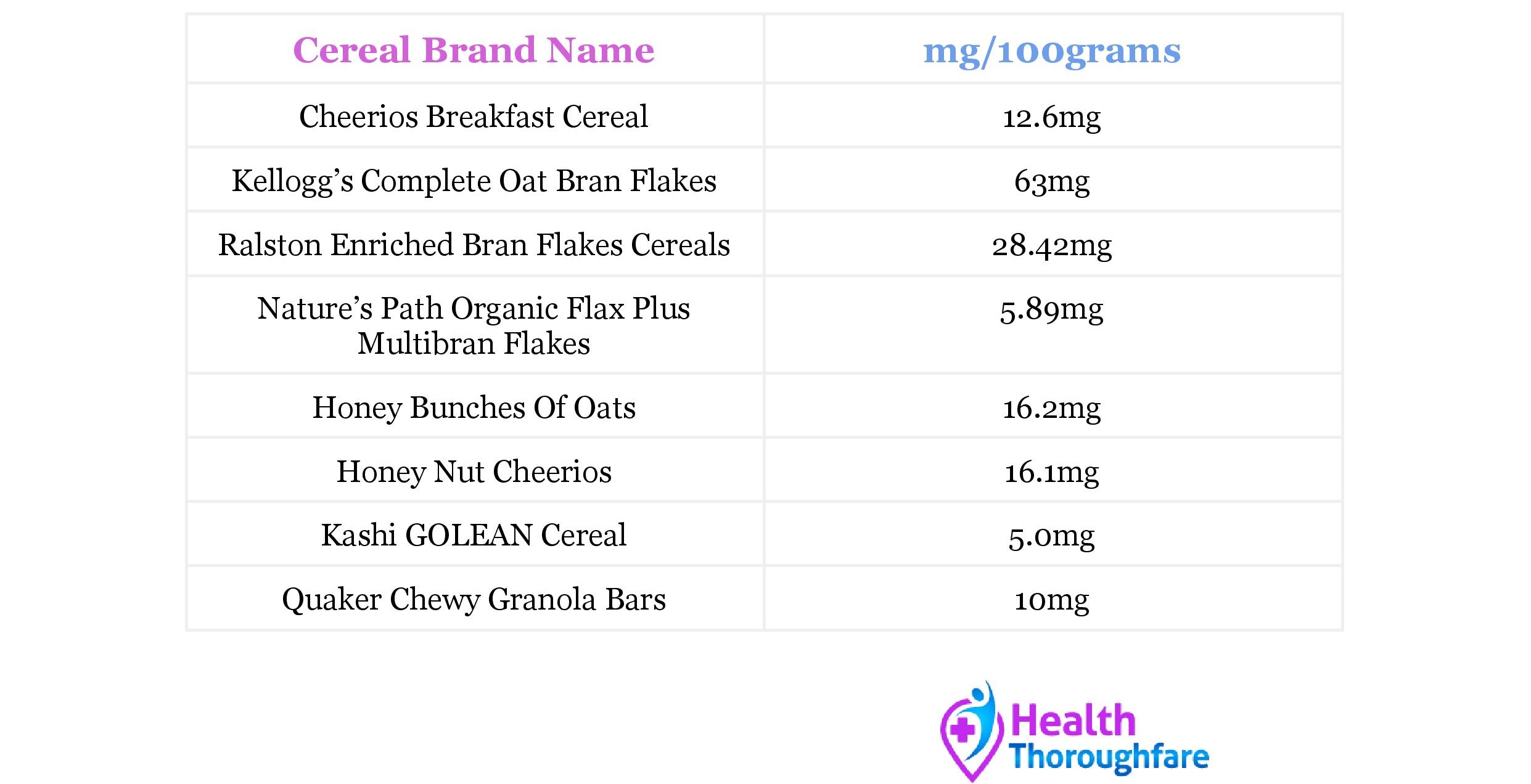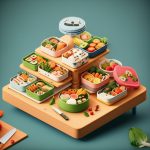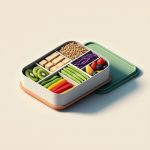Iron is a vital nutrient, playing a crucial role in oxygen transport, energy production, and immune function. Starting your day with a bowl of iron-rich cereal can be a simple yet effective way to boost your intake of this essential mineral. This comprehensive guide explores various high-iron cereal options, tips for maximizing absorption, and considerations for choosing the perfect bowl to fuel your day.
Power Up Your Breakfast with Iron
Breakfast is often touted as the most important meal, and for good reason. A nutritious breakfast sets the stage for a productive and energized day. Choosing a cereal rich in iron can be particularly beneficial, especially for those prone to low iron levels. Iron is essential for carrying oxygen throughout the body, supporting energy levels, and maintaining a healthy immune system. Incorporating high-iron cereals into your breakfast routine can be a convenient way to ensure you’re meeting your daily iron needs.
Boosting Iron: Fortified vs. Natural
Cereals derive their iron content from two primary sources: fortification and naturally occurring iron within the grains themselves.
Fortified Cereals: The Iron Supplement
Fortified cereals are like the superheroes of the breakfast aisle, receiving a boost of added iron during processing. This is an excellent way to easily increase your iron intake without significantly altering your breakfast habits. Popular choices like Frosted Mini Wheats can deliver up to 18mg of iron per serving, while others, such as Ralston Bran Flakes, boast an impressive 67.67mg per 100g. This can contribute significantly to your daily iron requirements in just one bowl.
Naturally Iron-Rich Cereals: The Grain Powerhouses
These cereals harness the inherent power of iron-rich grains. Teff, a small but mighty grain, is a standout, offering around 7.9mg of iron per 100g. Millet and quinoa are also excellent options, providing 8mg and 4.6mg of iron per 100g, respectively. Even familiar grains like spelt, kamut, wheat, and sorghum contribute a respectable amount of iron to your diet. These naturally iron-rich grains are a great choice for those seeking less processed options.
Maximizing Iron Absorption: Tips and Tricks
Consuming iron-rich foods is only half the equation; your body also needs to absorb it effectively. Here are some key strategies for optimizing iron absorption:
The Power of Vitamin C
Vitamin C is iron’s best friend, aiding in its conversion to a more readily absorbed form. Adding vitamin C-rich foods to your breakfast, such as a splash of orange juice, a handful of berries, or some sliced kiwi, can significantly improve iron absorption from your cereal.
Iron Inhibitors: Coffee, Tea, and Dairy
Certain substances can hinder iron absorption. Coffee, tea, and dairy products contain compounds that may bind to iron, making it less available to your body. This doesn’t mean you have to eliminate these from your diet, but it’s advisable to consume them separately from your high-iron cereal, ideally an hour or two before or after.
Choosing Your Iron-Boosting Champion
Selecting the right high-iron cereal is a personal endeavor, influenced by individual preferences and needs:
- Taste: Enjoyment is key to consistency. Explore various flavors and textures to find a cereal you genuinely like.
- Dietary Needs: Consider any dietary restrictions, such as gluten intolerance or sugar limitations.
- Iron Content: If maximizing iron intake is your primary goal, carefully examine the nutrition label. Fortified cereals or those made with teff or millet generally offer the highest iron levels.
Do Cheerios Have High Iron? Separating Fact From Fiction
Cheerios are a popular breakfast choice, often touted for their nutritional value. But do they truly deliver on the promise of high iron content? The answer isn’t straightforward. Different varieties of Cheerios boast varying iron levels. While original Cheerios contain some iron, Multigrain Cheerios are the clear winner in this category, packing 18 milligrams of iron per serving (1 ⅓ cups). This amount can fulfill the entire recommended daily iron intake for many adults.
It’s important to note that the iron in Cheerios, and many other cereals, is added through fortification. This means it’s not naturally present in the oats but added during processing. While fortification is a common practice to enhance nutritional value, it’s essential to be aware of this distinction.
Another key consideration is iron absorption. The iron in plant-based foods, like Cheerios, is less readily absorbed than iron from animal sources. Pairing your Cheerios with vitamin C-rich foods, like orange juice or strawberries, can significantly enhance absorption.
Why is iron so important? It’s a critical component of red blood cells, responsible for carrying oxygen throughout the body. Inadequate iron intake can lead to fatigue, weakness, and even anemia. Consuming iron-rich foods like Multigrain Cheerios can help maintain healthy blood and energy levels.
However, factors like genetics and overall diet also influence iron absorption. While Cheerios can contribute to your iron intake, consulting a doctor or registered dietitian is always recommended, especially if you suspect an iron deficiency. They can assess your individual needs and advise on the best course of action, including potential iron supplements if necessary.
| Feature | Details |
|---|---|
| Iron Content | Varies by type, Multigrain Cheerios highest (18mg per serving) |
| Iron Source | Fortified (added during processing) |
| Absorption Tip | Pair with Vitamin C-rich foods |
| Iron’s Role | Essential for red blood cell production and oxygen transport |
| Deficiency Risks | Fatigue, weakness, anemia |
While not all Cheerios are iron powerhouses, the Multigrain variety can contribute significantly to a healthy iron intake. Remember the vitamin C trick, and consider a balanced diet rich in various nutrient sources for optimal health. To enjoy a healthy and delicious beverage with your cereal, try our amazing goji berry tea.
Boost Your Iron: The Top Grains Packed With This Essential Mineral
Iron is essential for our well-being, playing a vital role in oxygen transport and energy production. Low iron levels can lead to fatigue, weakness, and diminished overall health. Fortunately, incorporating iron-rich grains into your diet can be a simple and effective way to boost your iron intake.
Quinoa, a nutritional powerhouse, provides around 2.8 milligrams of iron per cooked cup, along with protein and fiber. Oats are another excellent choice, offering approximately 3.4 milligrams of iron per cooked cup, plus a healthy dose of fiber for digestive health. While brown rice contributes a more modest 1.5 milligrams of iron per cooked cup, it remains a valuable staple in a balanced diet.
Whole wheat, containing around 2.4 milligrams of iron per cooked cup, is another good source, alongside millet, which offers similar iron content and additional fiber and nutrients.
It’s important to remember that iron absorption can vary depending on several factors. Studies suggest that the type of iron (heme iron from animal sources is more easily absorbed than non-heme iron from plants) and the presence of other nutrients in a meal can influence absorption rates. Vitamin C enhances iron absorption, while calcium may inhibit it. Ongoing research continues to explore these complex interactions.
Consuming iron-rich grains like quinoa, oats, brown rice, whole wheat, and millet can be a valuable strategy for ensuring adequate iron intake. Diversifying your diet with a variety of iron-rich foods is always recommended.
| Grain | Iron per Cooked Cup (mg) |
|---|---|
| Quinoa | ~2.8 |
| Oats | ~3.4 |
| Brown Rice | ~1.5 |
| Whole Wheat | ~2.4 |
| Millet | ~2.4 |
These values are approximate and may vary based on specific grain varieties and cooking methods. This table provides a general guideline for making informed choices. For a healthy cooking oil option to complement your meals, consider our grapeseed oil substitute.
Reach Your 27 mg Iron Goal: Expert Diet & Supplement Guide
Iron is crucial for overall health, and certain individuals, like pregnant women, require higher amounts (around 27 mg daily). Meeting this requirement demands a strategic approach incorporating both diet and potentially supplementation. Non-pregnant women typically need 18 mg of iron daily, while men require 8 mg. These are general guidelines, and individual needs can vary.
Fortified cereals can be a valuable source, sometimes providing 100% of the recommended daily allowance in a single serving. However, relying solely on fortified cereals isn’t ideal. Diversifying your iron sources is essential. Whole grains like oats and quinoa, legumes, nuts, seeds, and even dark chocolate can contribute to your daily iron intake.
Maximizing iron absorption is key. Consume iron-rich foods alongside vitamin C-rich options. Conversely, avoid pairing them with dairy or tea, which can inhibit absorption. Sprouting and fermenting legumes can further enhance iron bioavailability.
If dietary changes are insufficient, iron supplements, under the guidance of a healthcare professional, can provide a concentrated dose. For severe deficiencies, IV iron infusions, administered under medical supervision, offer a faster solution.
Remember, individual iron needs vary based on age, sex, and overall health. Consulting a doctor or registered dietitian is always recommended, especially for personalized guidance on supplementation and addressing iron deficiency. Staying informed about the complexities of iron absorption and its role in various health conditions is crucial for making informed decisions about your health. It’s a continuous journey, and maintaining healthy iron levels is an important step towards overall well-being.
- Bento Box Trays Streamline Restaurant Meal Presentation and Transport - December 13, 2025
- Plastic Bento Boxes Face Scrutiny Over Sustainability Impacts - December 11, 2025
- Bento Tray Revolutionizes Organized Meal Transport and Presentation - December 10, 2025










